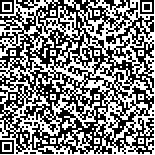下载中心
优秀审稿专家
优秀论文
相关链接
摘要

月球的光度具有纪年级的稳定性,其辐照度可作为可见—近红外光谱辐射基准,基于此的月球辐射定标方法有望成为辐射定标的新方法之一。本文介绍一种利用月球目标作为稳定辐射定标源,结合月球辐照度模型,跟踪风云二号静止气象卫星遥感仪器可见光通道辐射响应变化的方法。通过轨道预报遴选出风云二号E星(FY-2E)的扫描辐射计2010年1月—2014年10月的对月观测数据,经过月球图像提取和筛选、月球照度模型计算、卫星观测月球照度模型计算、星—月—日距离校正等环节处理后,获取了FY-2E扫描辐射计可见光通道的辐射响应变化,并且与深对流云辐射定标方法进行了对比验证。主要结果:(1)利用月球辐射作为基准可有效监测遥感仪器可见光通道的辐射响应变化情况,通过线性回归分析发现FY-2E可见光通道的辐射响应总衰减率是9.2%,年衰减率为1.96%,95%置信区间的不确定度和稳定性指标分别为±0.79%和2.66,其结果与基于深对流云目标监测的仪器辐射响应结果相近;(2)FY-2E可见光通道较低的量化等级(6 bit)、杂散光影响等因素对利用月球进行辐射响应定标和跟踪监测有一定的影响;(3)FY-2E辐射响应除了衰减趋势,还存在周期性震荡的特点。基于月球目标的辐射定标方法能够有效监测卫星的辐射响应衰减,可作为星载遥感仪器辐射响应定标和检验的一种可靠手段,特别是针对卫星全生命周期的历史数据再定标,从而提高辐射定标精度。
The photometric stability of lunar targets is high. The lunar irradiance reflected from the sun can be considered a benchmark for radiance calibration in the visible and near-infrared spectra. Meanwhile, lunar calibration is a new method of calibrating and validating satellite-based instruments. Therefore, a method that uses a lunar target as a stable radiation calibration target and the lunar irradiance model is introduced to carry out the radiation response tracking method of the FY-2 static meteorological satellite.
Data from the FY-2E scanning radiometer from January 2010 to October 2014, which contain the moon target by orbit forecast, are collected. After a series of processes, including the extraction of lunar images, calculation of the lunar illumination model and satellite observation lunar irradiance, and correction of distance of sat-moon-sun, the response change of the visible band of the FY-2E scanning radiometer is obtained. Finally, the result is compared with that of the deep convective cloud radiometric calibration method.
The main conclusions are as follows. (1) The total degradation of radiometric response is 9.2% with an annual decay rate of 1.96% by the lunar method. The uncertainty and the 95% confidence interval are 2.66% and ±0.79%, respectively. The results are similar to that of the DCC method, and this affinity shows the validity of the lunar method. (2) The low quantization level (6 bit) and stray light of the FY-2 visible channel can affect the results. (3) In addition to the attenuation trend, the FY-2E radiation response shows the characteristics of seasonal cycle.
The lunar radiometric calibration tracking method can effectively monitor sensor response attenuation and be used as radiometric benchmark for visible band calibration in the entire life of the sensor for the improvement of the accuracy of radiometric calibration.

